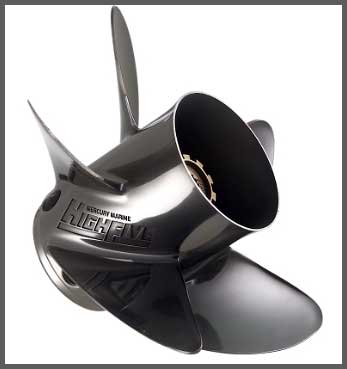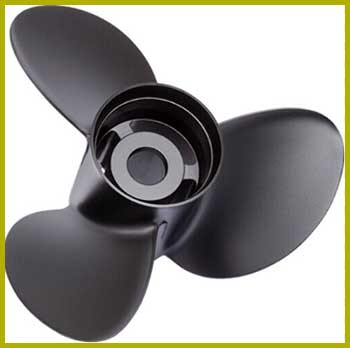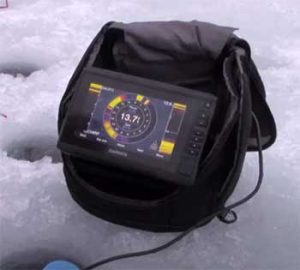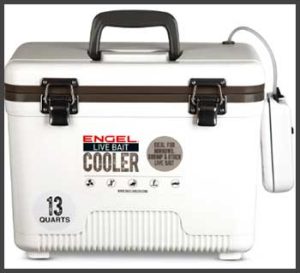When it comes to boats, there’s more to speed and performance than just the size of your engine. One of the most crucial elements is the propeller, specifically the pitch.
Two of the most popular propeller pitches are 19 and 17, but which one is the best for your boat? In this article, we’ll dive into the differences, pros, and cons of a 19 pitch prop and a 17 pitch prop, while also answering some frequently asked questions.
A Brief Comparison Table
| Feature | 19 Pitch Prop | 17 Pitch Prop |
| Top Speed | Higher | Lower |
| Acceleration | Slower | Faster |
| Fuel Efficiency at Cruising Speeds | Better | Worse |
| Maneuverability at Lower Speeds | Worse | Better |
| Engine Load | Higher | Lower |
| Performance in Choppy Waters | Better | Worse |
| Suitability for Water Sports | Better | Worse (depending on the sport) |
| Suitability for Quick Takeoffs | Worse | Better |
The Basics: Understanding Propeller Pitch
Before we can discuss the pros and cons of 19 and 17 pitch props, it’s important to understand what propeller pitch is. The pitch refers to the distance a propeller would theoretically move forward in one rotation if there were no slippage.
A higher pitch means that the propeller will travel further with each rotation, while a lower pitch will move less distance. With that in mind, let’s discuss the advantages and disadvantages of both pitches.
The 19 Pitch Prop: Speed, Efficiency, and High-Performance
Pros

- Higher Top Speeds: The 19 pitch prop is designed for boats that need speed. With its higher pitch, the propeller can generate more forward movement with each rotation, which translates to greater top speeds. This makes it an ideal choice for speed enthusiasts or those participating in water sports like wakeboarding or waterskiing.
- Greater Fuel Efficiency: A 19 pitch prop can provide better fuel efficiency at cruising speeds, as it requires fewer rotations to maintain the same speed compared to a lower pitch prop. This means you’ll burn less fuel and get more mileage out of each tank.
- Better Performance in Choppy Waters: A 19 pitch prop can maintain its speed more effectively in choppy waters, as the higher pitch can compensate for the loss of forward momentum caused by waves.
Cons
- Reduced Acceleration: The main disadvantage of a 19 pitch prop is that it can result in slower acceleration, as the higher pitch requires more power to get the boat up to speed. This can be a concern for boaters who need quick takeoffs or frequent stops.
- Higher Engine Load: A 19 pitch prop places more load on the engine due to its higher pitch, which means the engine has to work harder to maintain speed. This can potentially lead to increased engine wear and tear over time.
The 17 Pitch Prop: Quick Acceleration and Versatility
Pros

- Faster Acceleration: The 17 pitch prop is designed for boats that need quick acceleration. With its lower pitch, the propeller can generate more lift and get the boat on plane faster, making it an excellent choice for those who need quick takeoffs or frequent stops.
- Better Maneuverability: A 17 pitch prop provides better maneuverability at lower speeds, making it easier to navigate tight spaces or crowded waterways.
- Lower Engine Load: Since a 17 pitch prop requires less power to maintain speed, it places less load on the engine, potentially prolonging engine life.
Cons
- Lower Top Speeds: The main disadvantage of a 17 pitch prop is that it can result in lower top speeds due to the shorter distance traveled with each rotation. This can be a concern for those looking to participate in water sports or seeking higher cruising speeds.
- Reduced Fuel Efficiency: A 17 pitch prop may not be as fuel-efficient at cruising speeds compared to a higher pitch prop, as it requires more rotations to maintain the same speed.
Finding The Perfect Balance: Choosing Between a 19 Pitch and 17 Pitch Prop
When it comes down to making a decision between a 19 pitch and 17 pitch prop, it’s essential to consider your specific needs and how you plan to use your boat. Here are a few factors to keep in mind when making your choice:
- Boat Size and Weight: The size and weight of your boat play a crucial role in determining the ideal propeller pitch. Heavier boats may require a higher pitch prop to maintain speed, while lighter boats might perform better with a lower pitch prop for quicker acceleration.
- Engine Power: The power of your boat’s engine is another key factor to consider. A more powerful engine may be able to handle a higher pitch prop without sacrificing acceleration, while a less powerful engine might struggle with a higher pitch prop, making a lower pitch prop more suitable.
- Activities and Usage: Your preferred boating activities also play a role in determining the best propeller pitch. If you’re into water sports like wakeboarding, waterskiing, or racing, a 19 pitch prop with higher top speeds may be more suitable. On the other hand, if you frequently navigate tight spaces or need quick takeoffs, a 17 pitch prop might be a better fit.
- Fuel Efficiency: If fuel efficiency is a priority, you might lean towards a 19 pitch prop, which generally provides better fuel efficiency at cruising speeds. However, keep in mind that the overall efficiency will also depend on the size and weight of your boat, as well as your engine’s power.
Ultimately, the best propeller pitch for your boat will be the one that strikes the perfect balance between speed, acceleration, fuel efficiency, and engine load. Don’t be afraid to experiment with different pitches to find the one that works best for your unique needs.
It’s also a good idea to consult with a marine professional or your boat’s manufacturer for personalized advice on choosing the right propeller pitch.
Also Read: Is Garmin 73cv Ice Bundle Worth The Money?
Frequently Asked Questions (FAQ)
It depends on your boating needs and preferences. A higher pitch prop, like the 19 pitch, is better for higher top speeds and fuel efficiency at cruising speeds, while a lower pitch prop, such as the 17 pitch, provides faster acceleration and better maneuverability at lower speeds.
A higher pitch prop moves a greater distance with each rotation, which can result in higher top speeds and better fuel efficiency at cruising speeds. However, it can also lead to slower acceleration and a higher engine load.
The most efficient propeller pitch depends on the specific boat and its intended use. In general, a propeller pitch that provides the best balance between speed, acceleration, fuel efficiency, and engine load for your boat’s size and weight is the most efficient choice.
If you’re looking for more speed, a higher pitch prop, like a 19 pitch, is typically the better choice. It moves a greater distance with each rotation, resulting in higher top speeds. However, keep in mind that a higher pitch prop may also result in slower acceleration and increased engine load.
A lower pitch prop, such as a 17 pitch, is generally better for takeoff. Lower pitch props provide faster acceleration and more lift, allowing the boat to get on plane more quickly. This is particularly important for boaters who need quick takeoffs or participate in water sports that require rapid acceleration.
Final Words
In conclusion, the choice between a 19 pitch prop and a 17 pitch prop depends on your individual boating needs and preferences.
By understanding the pros and cons of each pitch and considering factors like boat size, engine power, intended usage, and fuel efficiency, you can make an informed decision that optimizes your boat’s performance and ensures a smooth, enjoyable experience on the water.



